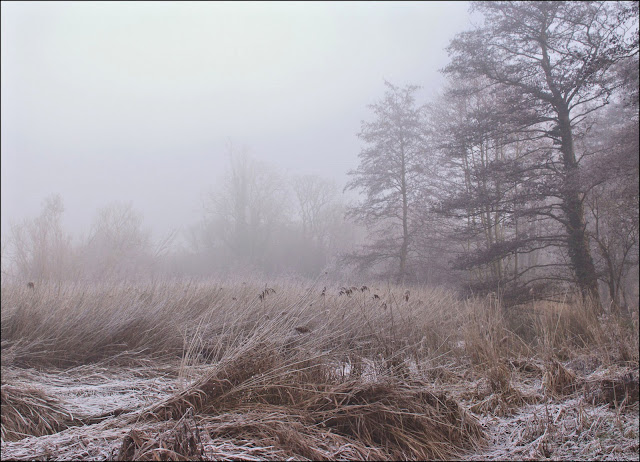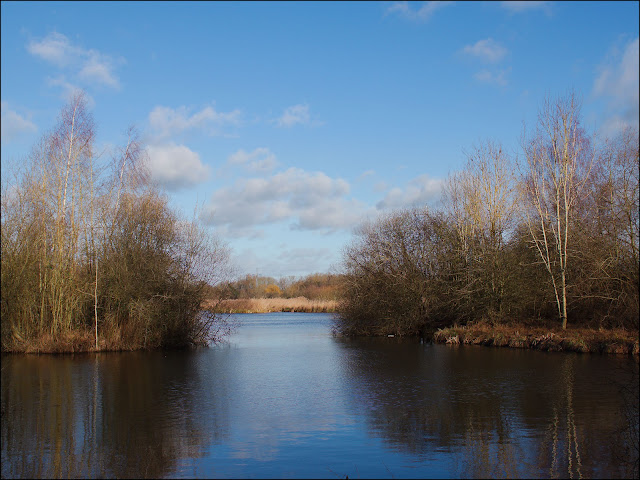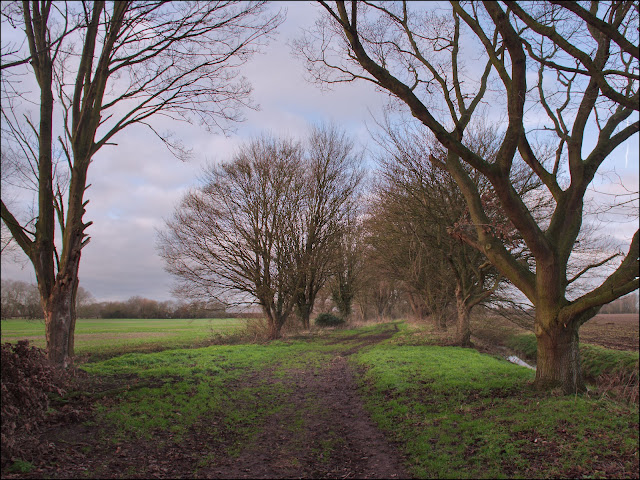If you wait for the ideal day to go out for a walk at this time of year you may never get out of the house at all. So it was that my brother Les and I drove to the village of Over, on a blustery day, to investigate the recently opened footpath around the southern part of Cuckoo Fen, part of the Ouse Fen project to create a huge reedbed for the benefit of wildlife.
We began in Over itself, checking the church spire which sometimes provides a look-out perch for a Peregrine Falcon, but no luck this morning. Instead my eye was attracted to a decaying door in a building which had obviously once seen better times.
We turned off the main street along Overcote Road, which passed some attractive houses before the road turned into a farm track.
The land here is only about 4 metres above sea-level, while the village is built on higher ground, between 5 and 15 metres above sea-level. Such subtle variations in height make all the difference along the fen-edge; they say you can always tell a true fenman because they can point out "hills" which most people can't even see. Bare Hill, just a short distance from here, is named on the map, but doesn't warrant a spot height or even a contour to confirm its presence.
We turned off onto an old track known as Ouse Fen Road. The substantial ditches on either side suggested that it was once an important way. Despite this double-drainage it was still plenty muddy in places. We soon had descended another metre or two, which meant the land was becoming wetter.
We've now reached Cuckoo Fen where a path, of sorts, loops around a body of water of highly irregular shape.
It was probably too windy for many birds to be about, though we saw several species of duck, a large flock of geese and, star of the show, a Great White Egret standing nonchalantly at the water's edge. But we'll have to wait till summer for the Cuckoo to turn up on Cuckoo Fen!
Ah, here's a convenient bench.....
Time for a cup of hot chocolate!
This area has an interesting history: It was once at the edge of a huge area which flooded every winter (and was mostly fairly waterlogged throughout the rest of the year). This was the original Fenland.
Then in the seventeenth century there was a huge effort to drain the Fens for agriculture. Despite protests from the wildfowlers, fishermen and reed-cutters, who had traditionally made a living here, great channels were cut across the peat lands to get the water more quickly to the sea.
More recently the gravels deposited by the River Great Ouse have been exploited and many quarries were excavated.
During the last few decades as each gravel pit is exhausted it has been returned to nature.
Quarries are still working in the area, but gradually a huge reedbed is being formed. Already many once-scarce birds are making a home here - Marsh Harriers, Bitterns, Egrets, Bearded Tits and so on.
Those of you who've followed these walks will recognise these Konik ponies which graze the land and help to keep it in good shape.
Then we turned back and took a different lane leading towards Over.
We were closely observed as we sauntered by. I sometimes think there must be as many horses and ponies in our villages now as there were before we had motorised transport.
Another paddock held some sheep, though they paid us little attention. The black ears, eyes, nose and feet make me think that these are Kerry Hill sheep. They originate from the village of Kerry in Wales, not the Irish Kerry as you might think. They are a heartening success story in that they were once a threatened breed but numbers have increased sufficiently for them to be removed from the at-risk list.
A Mute Swan was cruising around one of the small ponds.
Every house in the Fens that has Dutch gables has stories about them being houses of the Dutch engineers who oversaw the drainage of the Fens, but this is one of the buildings which has some evidence to support the idea. It's thought to have been built by a Dutch prisoner of war who was set to work on the drainage scheme and who decided to settle here, eventually doing well enough to build this fine home.
Now we're heading home ourselves. Hope you enjoyed the outing.
Take care.







.jpg)

























































